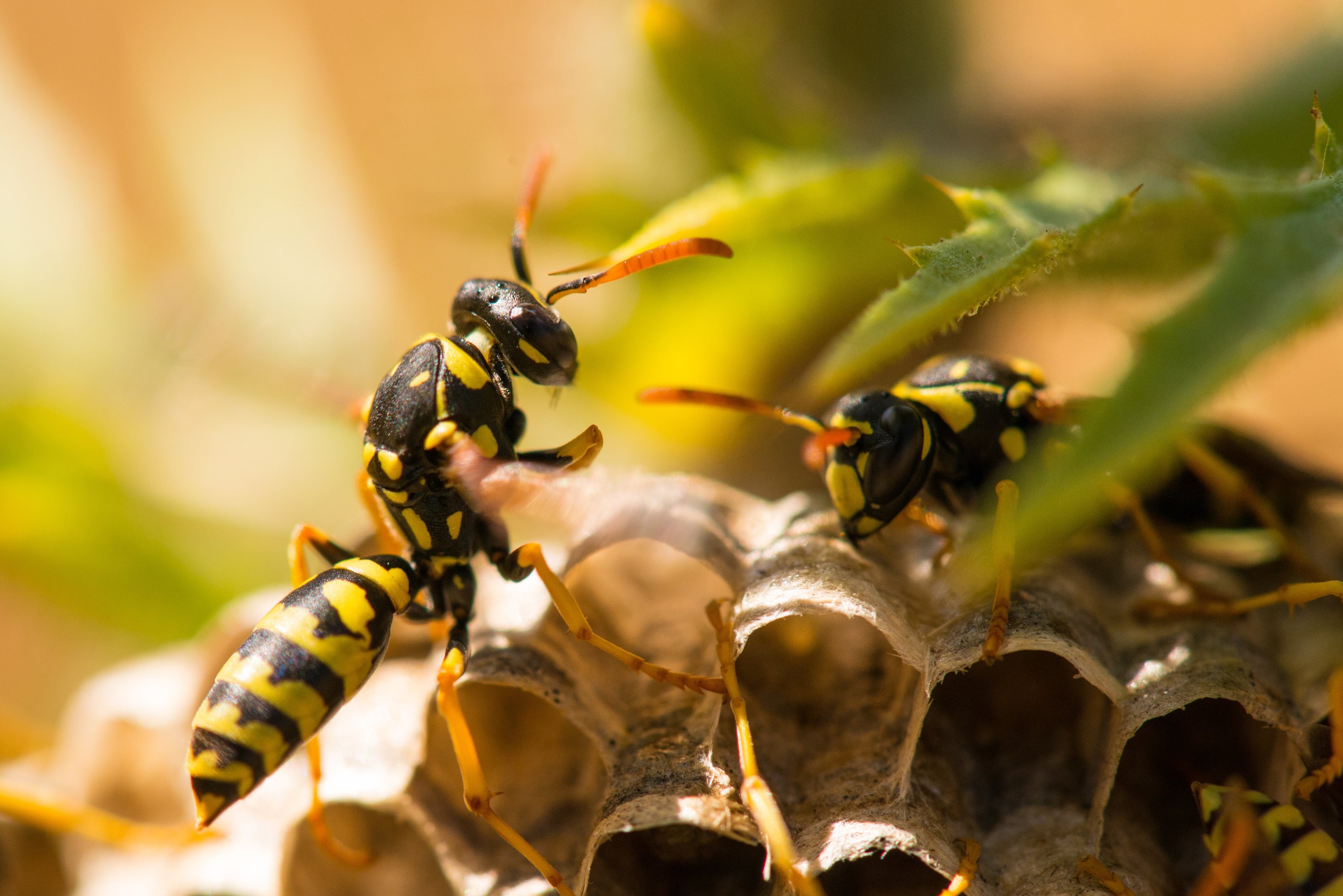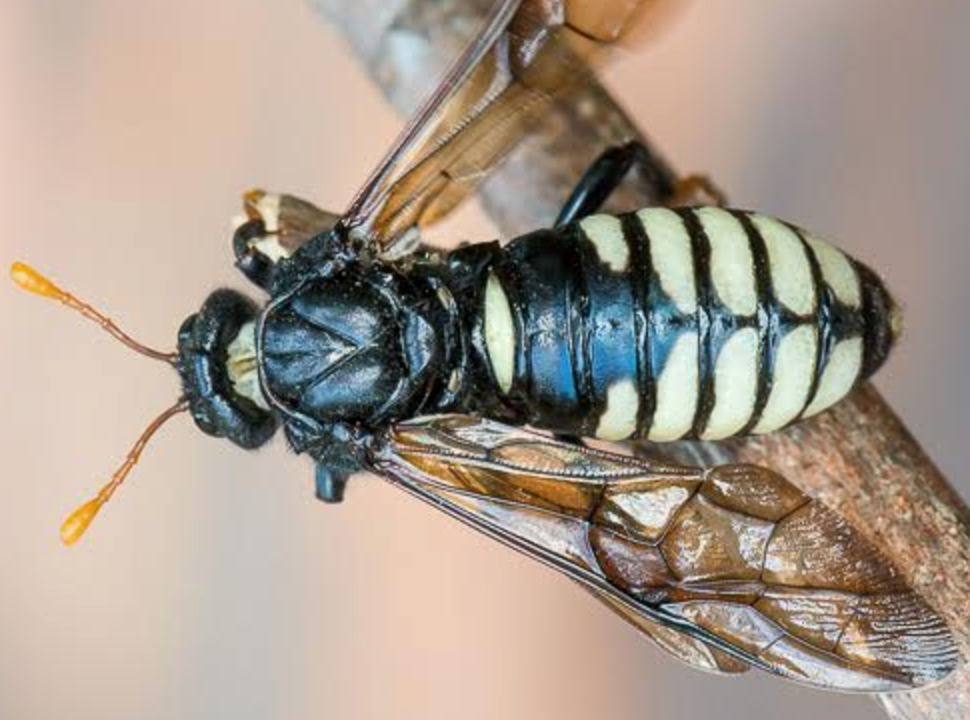Northern giant hornet
Northern giant hornets are the world's largest hornet.
- Usually 1.5 - 2 inches in length
- Large orange head with prominent eyes
- Black and orange/yellow striped abdomen
- Forms large colonies that usually nest in the ground but also nest in tree cavities








